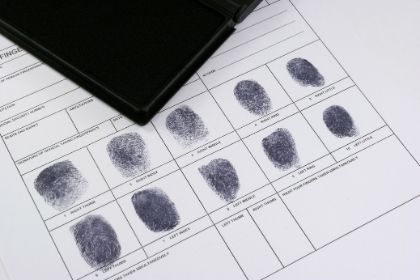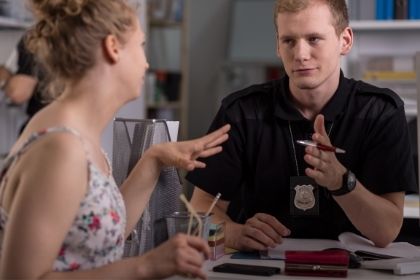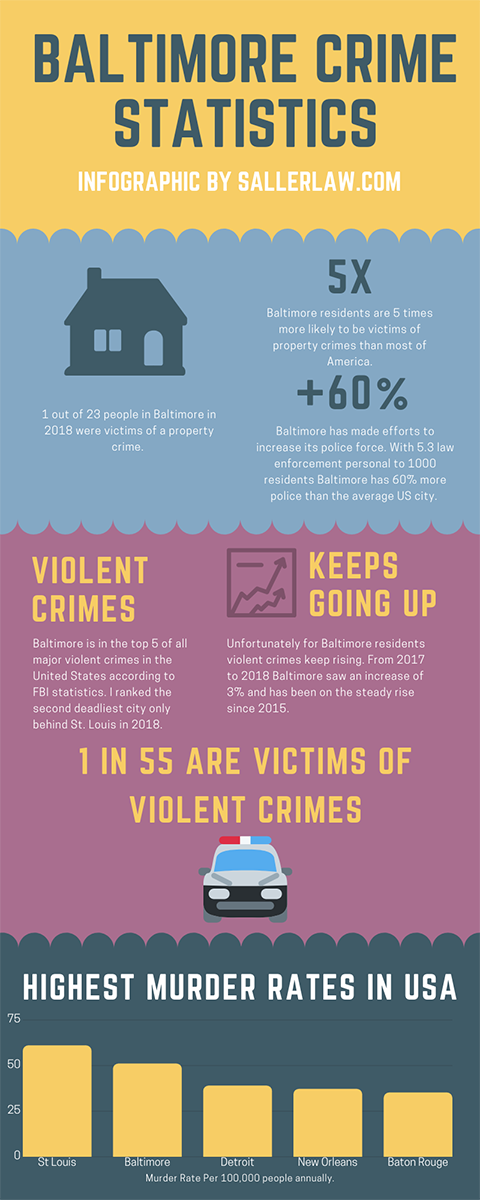Baltimore Crime Statistics
When it comes to crime, Baltimore has always been painted in a bad light. Hollywood and television do not help this image, as movies and TV series like The Wire play on the drama that is the Baltimore crime scene and hype it up to a mass audience.
So is Baltimore’s reputation deserved? The short answer may be yes — the crime stats compared to the national average don’t lie. We take an in-depth look at how crime statistics are recorded, why crime stats are important, and analyze Baltimore’s numbers compared to the rest of the United States.
Jump right to the numbers, check out our infographic, or review our Baltimore Crime Stats FAQ to get the highlights of this article.

First Off: How are crime statistics recorded in the United States?
It’s important to know how crime statistics are recorded in America. By understanding how crime stats are formed, it’s easier to understand the overview they give of a city.
There are two methods of recording crime in the United States:
1) The first is through law enforcement reports. This data is only accurate on crimes that were reported, recorded, and not canceled, also known as dropped charges.
2) The second method is through victim studies. Victim studies are studies that ask people if a crime has been committed against them over a specific time frame even if the crime was not reported at the time.
In the United States, there are two major crime data collection programs: the Uniformed Crime Reports (overseen by the FBI) and the National Crime Victimization Survey (Bureau of Justice Statistics). The Uniformed Crime Reports attempt to pull all law enforcement reports in the United States into one single report while the National Crime Victimization survey attempts to tackle crimes less likely to be reported or show up on the UCR.
Understanding the pros and cons of both forms of statistical reporting will help us understand how to use crime statistics and get the most out of reports.
Law Enforcement Records

While the list is expanding and becoming more nationwide, it still struggles to accurately show small or petty crimes and rural areas. Why? There are a couple of reasons:
1) The report relies on getting data from all different police jurisdictions. While federal, state, and major cities have improved reporting, rural police still are a bit behind. Large cities often have larger budgets and have transitioned into digital reporting, while rural areas are less likely to be digital and more likely to be manual. Even though the FBI has committed to the UCR, there still is a finite amount of resources they get to use and tracking down small rural statistics is often overlooked.
2) Probably the bigger issue with law enforcement records is the fact they do a poor job reporting less severe crimes. Remember, to be included in the statistics, the crime has to be reported, recorded, and not dropped. A lot of petty theft, abuse, and other crimes might originally get reported but are later dropped. If a plea deal is put in place and the charges are dropped to lesser crimes, then the bigger crimes will not go into the statistics.
Pros
Great Data Collection on Cities
Comprehensive Data on Crimes Like Murder, Rape, and Grand Theft
Easy to Access in the United States
Cons
Poor Data in Rural Areas
Not a Great Reporter of Lesser Crimes
Victim Studies

Victim Studies often ask if the household has experienced a certain crime with follow-up questions about if they know someone who has experienced the crime. From these questions, the survey can start to hypothesize the frequency of the crime in question for an area.
While these studies do a good job of giving a fairly accurate account of crime statistics, like petty theft and domestic abuse, they are projections only. Unlike law enforcement statistics, studies are estimates and those estimates can have large variable outcomes based on how the survey is conducted.
Pros
Best Way to Estimate Smaller Crimes
Customizable to Research Specific Crimes and Specific Areas
Easier to Administer and Get Results
Cons
High Variance Depending On Many Variables In Surveying
Less Accurate On Major Crimes Compared To Criminal Records
It is important to know how we collect criminal statistics so that we can better interpret the information and accurately use the information. Knowing how the data is collected is the first step in making use of the data. So how are criminal statics best used and why is it important?
How To Properly Use Crime Statistics

The best use of crime statistics is by municipal, state, and local officials in determining if legislation is working. There are multiple studies and reports that show legislation and appropriations of funds directly affecting crime and criminal areas. Well-informed voters and constituents can also offer you criminal data from similar areas and vote accordingly to new proposals and legislation.
So what does that mean? It means that sites that have year-over-year data to compare and contrast criminal statistics are far more valuable than those who just list one-time stats. Criminal statistics are far better at forecasting with data over time than one-time reports.
Example: Town A did a study that shows 1 in 100 of its citizens are likely to be a victim of a violent crime. Town B did the same study and found out that 1 in 75 of its citizens are likely to be a victim of a violent crime. Based on this you would think that town A is safer to live in, yes? Well, let’s look at the same two towns year over year.
Town A in 2017 had a 1 in 300 chance of violent crimes, in 2018 a 1 in 200, and in 2019 a 1 in 100. Town B in 2017 had a 1 in 20 chance of violent crimes, in 2018 a 1 in 50, and in 2019 a 1 in 75. Based on the year over year data, if you were planning to move somewhere Town B is actually working on fixing its violent crime problem, while Town A looks like it might have a growing and more immediate problem.
If Town B enacted new legislation or appropriated more funds to police in 2017, that data could help you. Town B’s got a handle on its problem and is doing things correctly and appears to be on the up and up. Town A might actually swing in the wrong direction or maybe a new law or appropriation of funds is leading to more crime.
Are Crime Statistics Proof of Safe or Dangerous Areas?

There are a ton of factors involved in how accurate and predictive the stats can be. It is important to look at how the data was collected, try and find the year over year data, and check for new legislation or fighting crime campaigns in the area.
Something you will want to take into account (most sites do it these days) is to look at ratios rather than total crime numbers. Crime ratios numbers derived from total crime figures and then simplified into a fraction. That fraction is normally displayed in the form of “1 out of every 100,000 people”, which allows you to compare more accurately amongst other areas.
Example: Town A had 5 violent crimes in its town in 2019 while Town B had 20 violent crimes. On the surface, it would look like in Town B you would be more likely to be a victim of a violent crime than Town A. However if you look at the Town’s population, Town A has 100 people while Town B has 4,000.
That means in Town A, 1 in 20 is a victim of a violent crime while in Town B, 1 in 200 people were victims of violent crimes. Ratios show that in Town A, you are 10 times more likely to be a victim of violent crimes than in Town B.
So now, with a deeper understanding of crime statistics, let’s now breakdown Baltimore’s.
Baltimore’s Crime Statistics
Based on everything above, we are going to look at Baltimore’s crime stats in rations and compare them to the national average. We are also going to look at year over year numbers to see if the crime is on the way up or down in Baltimore.
National Ratios vs Baltimore Crime Ratios
Credit: Area Vibes
Note: This chart was updated to reflect current data as of 3/17/2021
| Statistic | Reported | Baltimore / 100K | Maryland / 100K | National / 100K |
|---|---|---|---|---|
| Murder | 348 | 58.3 | 9.0 | 5.0 |
| Rape | 324 | 54.2 | 31.6 | 42.6 |
| Robbery | 4,856 | 813.1 | 152.2 | 81.6 |
| Assault | 5,573 | 933.1 | 261.3 | 250.2 |
| Violent Crime | 11,101 | 1,859 | 454 | 379 |
| Burglary | 5,414 | 906.5 | 278.9 | 340.5 |
| Theft | 16,395 | 2,745.1 | 1,485.0 | 1,549.5 |
| Vehicle Theft | 3,939 | 659.5 | 186.2 | 219.9 |
| Property Crime | 25,748 | 4,311 | 1,950 | 2,110 |
Breakdown
As you can see, Baltimore is way above both Maryland and National averages in almost every major crime category. During 2019 in Baltimore, you had a 1 in 55 chance of being a victim of a violent crime, a 1 in 23 chance of being a victim of a property crime, and overall 1 in 16 people were a victim of any type of crime in Baltimore.
There is no real good way to sugar coat it; Baltimore’s crime is extremely high. When you look at the crime map of Baltimore and a breakdown of the crimes, we can find some good news, however. The northern part of Baltimore is nearly untouched by violent crimes and actually below the medium of the nation in property crimes.
You will want to stay away from the city center and the southern parts of Baltimore. This is where you can find violent crimes reaching as high as 100 times the national average and property crimes 50 times the national average, which may result in being a victim of an assault crime or other crime.
Year over Year Numbers
Even with the ratio breakdown above, it’s important to look at the year-over-year numbers to get an idea of the area’s crime rates and if they are going down or going up and are still a problem.
You can see with the graph above the number of daily crimes per 100,000 residents in Baltimore, MD; so that direct comparisons can be made, the number of daily crimes for Maryland and the number of daily crimes at a national level are also posted.
Baltimore Crime Statistics FAQs
Why is there a high rate of crime in Baltimore city?
Targeting the exact reason Baltimore’s crime rate is so high is difficult to do. While it’s easy to pose suggestions as to how to improve the crime rate in Baltimore, like advocating for better reform efforts, making sure outreach programs receive funding, and providing support for underserved communities, it’s not a catch-all for Baltimore’s crime rate.
How dangerous is it to live in Baltimore, Maryland?
After examining the Baltimore crime stats, it is easy to conclude that living in Baltimore can be more dangerous than living in other cities across the United States. Different areas of Baltimore have different crime rates, however, so where you live within Baltimore city and the Baltimore suburbs can have an impact of the crime you may or may not encounter.
Is Baltimore safe?
Conclusively, Baltimore is not as safe as other cities in America. There is an increased chance of being a victim of a violent crime in most parts of Baltimore. This should be taken into account when visiting certain areas in Baltimore or considering a move. Always research specific neighborhoods to deduce the exact crime rate each location boasts.
Is Baltimore really as dangerous as the media portrays?
Whether or not Baltimore is really as bad as shown on The Wire and on the media is up for debate — the crime stats do show higher violent crimes when compared to the national average. However, the media often highlights major news items, which is often major crime. Baltimore does provide safe neighborhoods, family-friendly areas, and a host of tourist attractions that visitors travel far to see. Always compare media stats to actual crime stats from trustworthy sources to get a full picture.
Why does Baltimore, MD have a negative reputation?
Baltimore has a bad reputation due to its crime rate, especially with violent crimes. Shows like The Wire have also contributed to Baltimore’s reputation, with the message of the show long outlasting its airing — it ended in 2008. Baltimore is often portrayed through a very specific lens and that is why it has a negative reputation, although crime stats don’t do much to dissuade that reputation.
Baltimore Crime Statistics Wrap-Up
Overall a complete analysis of Baltimore’s crime brings up some very interesting findings.
The Good:
The Northern counties of Baltimore are void of crime, similar to any major metropolitan area; they seem to be immune to violent crimes and have very little property crime to speak of.
Baltimore saw a big decrease in overall crime and property crime year-over-year, especially between 2017-2018.
The Bad:
The city as a whole has more crime per capita than almost every city in the United States.
The city center and Southern counties are some of the most violent and crime-ridden areas in the United States.
The data shows there is no improvement when it comes to violent crimes, and as a matter of fact, it has gotten worse.
Violent crimes are widely considered the biggest factor in safety and if you subscribe to that line of logic, Baltimore is one of the most dangerous places to live in the United States.
Summary
The complete breakdown of Baltimore’s crime is not all doom and gloom. Using ratios, year over year numbers, and crime maps you can actually paint a decent picture of Baltimore. While Baltimore is statistically more dangerous, it does show trends of moving in the right direction.

Think we left something out? Have a comment? Leave it below!

Sorry, the comment form is closed at this time.